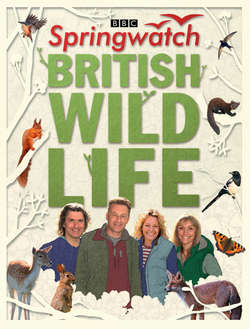Читать книгу Springwatch British Wildlife: Accompanies the BBC 2 TV series - Stephen Moss - Страница 8
ОглавлениеBuntings
©Do Van Dijck/Minden Pictures/FLPA
©Erica Olsen/FLPA
©Richard Brooks/FLPA
The corn bunting, yellowhammer and cirl bunting have all suffered in recent years from modern farming methods.
Buntings are, in some ways, the Cinderellas of seed-eating birds. They are neither as colourful as the finches, nor as ubiquitous as the sparrows, and we rarely see them unless we are looking specifically for them. This is partly because, until recently, they were mainly birds of the open countryside, but they have also suffered from changes in the way the countryside is farmed.
Five species of bunting breed in Britain: the corn bunting, cirl bunting and yellowhammer, all found mainly on lowland farms; the reed bunting, found in wetland habitats in the breeding season, and farms and gardens in autumn and winter; and our rarest, the snow bunting, found on the high tops of the Cairngorm mountains in summer and in flocks along our coasts in winter.
All five species are, sadly, giving cause for concern: the three farmland species are on the Red List, while the other two are on the Amber List. The corn bunting and yellowhammer really have seen their populations nose-dive. Once found throughout lowland Britain, they have disappeared from many of their former haunts. This is due mainly to the loss of breeding habitat and winter stubble fields caused by modern farming methods, which need to extract the maximum possible yield from fields all year round. The cirl bunting, a shy relative of the yellowhammer, once almost became extinct as a British breeding bird, but, thanks to the RSPB and farmers in its south Devon stronghold, it is now making a comeback.
Telling male buntings apart is reasonably easy, but females and youngsters can be puzzling – they are classic ‘little brown jobs’! The corn bunting is one of our largest songbirds: bulky and fat, with a streaky plumage, a large head and bill, and a characteristic way of dangling its legs when it flies. It may be a fairly dull-looking bird, but the corn bunting has some extraordinary breeding habits. The males will defend a large territory, supporting several females, a strategy known as ‘polygyny’.
The yellowhammer (its name comes from the German word for bunting) is easy to identify in breeding plumage: the male’s custard-yellow head is very striking; and the same is true for the male reed bunting, with its very obvious black and white head pattern. Females are trickier: yellowhammers can look quite brown, while a female reed bunting is superficially like a sparrow, but streakier, especially on her head. Both male and female reed buntings also show white outer tail feathers as they fly away from you! Cirl buntings look a bit like a bird designed by a committee: the body is streaky brown like a dunnock, while the head is black and yellow, similar to that of a yellowhammer but with a greenish tinge.
Song is a good way to tell the three commoner British buntings apart: the corn bunting sounds exactly like someone rattling a bunch of keys; the yellowhammer sings the famous mnemonic ‘a-little-bit-of-bread-and-no-cheeeeese’; while the reed bunting makes a rather pathetic sound, sometimes rendered as ‘pick-my-liquorice’, though it also sounds something like a bored sound engineer, continually repeating the mantra of ‘testing… one… two… testing’.
Both yellowhammers and reed buntings now regularly come to bird tables, especially in rural areas or where there is arable farmland or a wetland nearby. This has helped them maintain their numbers at a time when the wider countryside can no longer provide the food they need, and also brought a touch of the exotic among the usual tits, finches and sparrows.
The odd man out of our buntings is the snow bunting. It doesn’t really belong in Britain, as it is adapted to living in the far north, and is the only small bird to spend the winter months in the Arctic. Nevertheless, a few pairs nest each summer in snow-covered parts of the Scottish Highlands, while in winter little flocks can sometimes be seen along our east coasts. In flight, they are very easy to identify – like a flock of snowflakes scattering through the air!
©Marcel van Kammen/Minden Pictures/FLPA
The male reed bunting is one of our most handsome breeding birds.
©Andrew Parkinson/FLPA
The snow bunting is one of the toughest birds on the planet.
